Let’s go back in time to June, 2013. We had Moby, we had our new raft on our new trailer, and we had won permits in the river lotteries to go down some of Idaho’s finest whitewater streams. What was missing? Rowing experience for Janene. When we bought Moby she was determined to learn how to drive it so as not to be “one of those pathetic old ladies who always lets the stupid old man do all the driving.” The same went for rafting. The whole point of us buying a new, smaller raft was so that she could row it. Fine by me: if she rows then I am freed up to fish. So off we went to Boise’s backyard play river, the Payette.
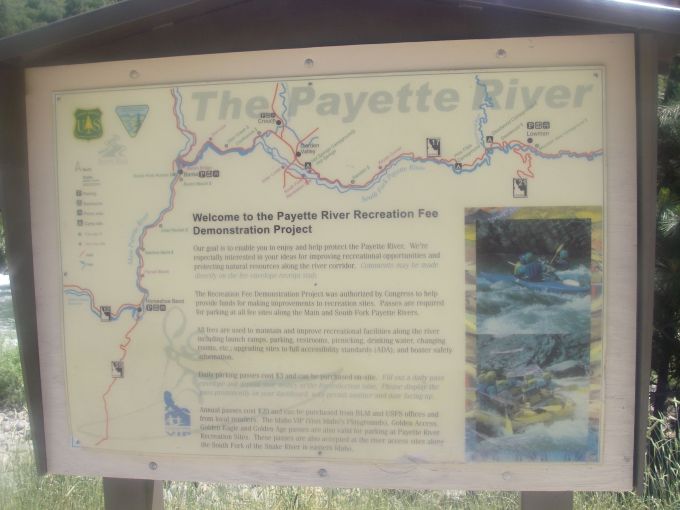
In comparison with other states Idaho ranks embarrassingly low in many socioeconomic categories. We are usually down at the bottom rubbing elbows with the likes of Mississippi, Arkansas, and Kentucky. For example, Idaho scores the following:
#42 -Median household income
#49 – Salary of classroom teachers
#49 – Average per-pupil spending
#50 -College enrollment after high school
#50 – Per capita physicians
#51 – Breast cancer screening (Yes, 51. Who beat us out f the top 50? Puerto Rico? Guam?)
But there are some spots we rank high, such as:
#11 – Suicide rate
#7 – Melanoma
#1 -Percentage of workers earning minimum wage
But at least we can be proud of our potatoes.
Now I have not seen an official ranking for the category of public river access. But surely here Idaho must be near the top. They put my home state of Oregon to shame for sure. There are boat ramps and river access points all over the place. Just 30 minutes from our house is the Payette River. It is Boise’s backyard whitewater river, offering river reaches ranging from calm and family friendly to truly world class whitewater. We set out for a Grandma friendly reach on the lower river. While I used my bike to shuttle Moby down to the takeout Janene did some last minute cramming from her Whitewater Rowing for Dummies book.
45 minutes later I have have dropped Moby off downstream, rode my bike back to the ramp, and Janene was still deep in study. As a self-appointed “safety monitor” in nearly all situations she was not taking this rowing business lightly.
In the past Janene’s only rowing experience was trying to maneuver the heavily loaded cargo barge affectionately known as the “Queen Mary” (seen below on a trip with buddy Darin on the sticks). It is a beast of burden, but also a beast to row. Thus Janene’s rowing attempts always ended in frustration. Or ended stuck in a back eddy.
But in her first five mile run of Class I water here on the Payette in the new raft Janene did great. She got the basics down, practicing her turns and maneuvers on this flatwater stretch.
Now it was time to load up the boat and head upstream to a much more challenging stretch of river. The nearest official launch was miles below, so we just made our own ramp right here. Moby don’t need no stinkin’ boat ramp.
Rivers rapids are rated on a scale I-VI. It is more complicated than I explain here, but basically
I – Easy smeasy. Go sideways in a canoe and not have a problem
II – Some nice waves to go over, some rocks to dodge. My upper limit in a canoe
III – Big waves, big rocks, maneuvering required to make it through. Bad things can happen. Maximum comfort level for most folks
IV – Serious waves, keeper holes, scouting required. Experienced people get nervous before entering, and they sometimes die in these rapids
V – Very dangerous. Attempted by only serious whitewater experts or fools. I have never done a Class V
VI – You’ll probably die, and if you do survive it’s mostly due to luck.
Below Janene shows her stuff in a Class II.
Whitewater ratings were always pretty subjective. Certainly there were regional differences: what in Oregon on the Deschutes gets called a Class IV would be scoffed at by Idahoans and get perhaps only a III from them. But 40 years ago the ratings made sense. Today however, vastly improved boating technology in the hands of Red Bull fueled testosterone boys with GoPro cams strapped on their heads has led to successful runs over 100’+ waterfalls and helicopters shuttles to access impassable gorges of Himalayan whitewater. So the rating scale doesn’t really work like it once did. Ideally Janene should have moved from Class I to Class II water practice, but it was a longer drive, so we jumped her up a level. Great coaching can overcome a lack of experience, right? Here is a look below at Janene’s first Class III, known locally as GLOYF (Go Left Or You’re F****d). Keep in mind rapids have generally been named by boys afflicted with testosterone poisoning.
Or good luck, a lot of yelling, and some prayers can get you through. Janene did great, but just let me say if Class III water isn’t exciting enough for you then try going through with a novice at the oars. Made it seem like Class IV to me.
Whew! Another rapids behind us, our boat upright, and our relationship still intact. This run known to locals as “Banks to Beehive” packs four Class III and six Class II rapids in just seven miles. Our new raft was yet unnamed, but after today we decided to christen it the “Hail Mary”. Our fearless river running friend Lehua had once told Janene that she had learned to row big water by just throwing up some Hail Marys and going for it. So the name was based on my frequent prayers to the river gods to get me through alive with Janene at the oars, and the fact that Janene’s attempts to make it through a rapids sometimes seemed to have as much chance as a last second pass in a football game. Check out her grimace below to see how receptive she was to my critique of her just completed run.
Out of adrenaline, it was time to camp. The beauty of life in Moby is that home is where ever you want it to be. Want a waterfront view? Can’t beat this property we owned for the night. Moby don’t need no stinkin’ campground.
We have the finest van, the finest boat, and the finest view camps. But our cuisine is generally lacking. If we really cared we would do something about it. Instead, this night it was Tuna Surprise, green beans a la can, and most important, an iced cocktail. All served on a lovely 5 gallon bucket I salvaged from the side of the road on one of my bike shuttles.
As the sun sets over the Payette valley we gave thanks to our patrons Saint Lazarus and JC for getting us through the day. And bless us they did, for we survived two more runs from Banks to Beehive the next day. In two days 26 miles of rowing practice for Janene, 26 miles of bike shuttling for me. Life is good.
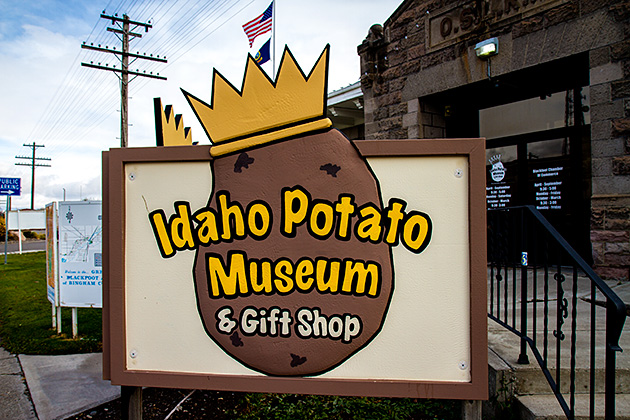


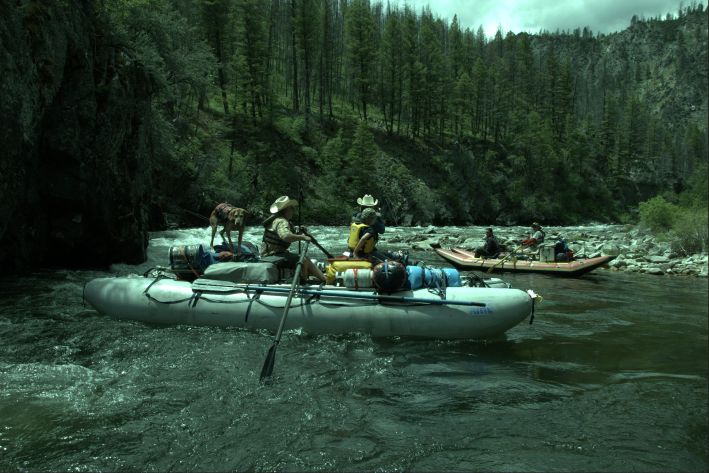

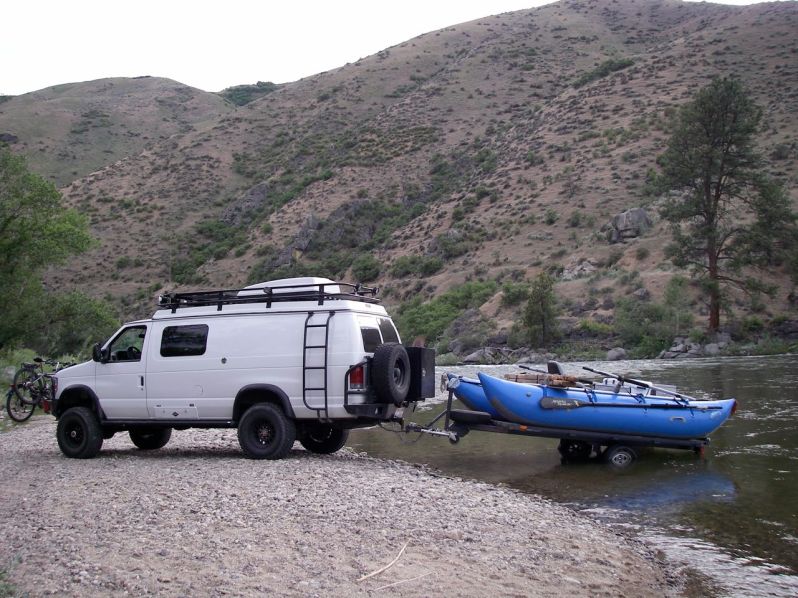
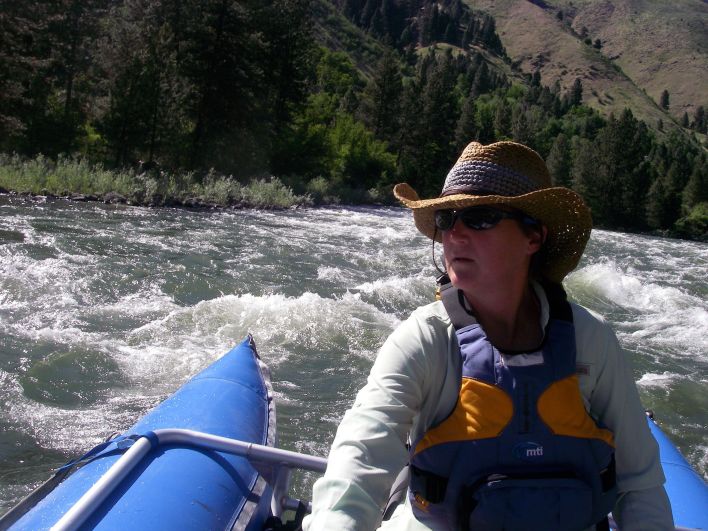
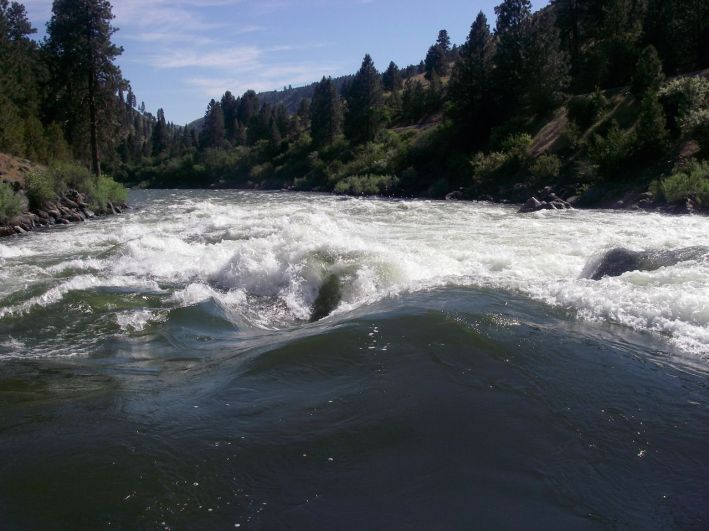




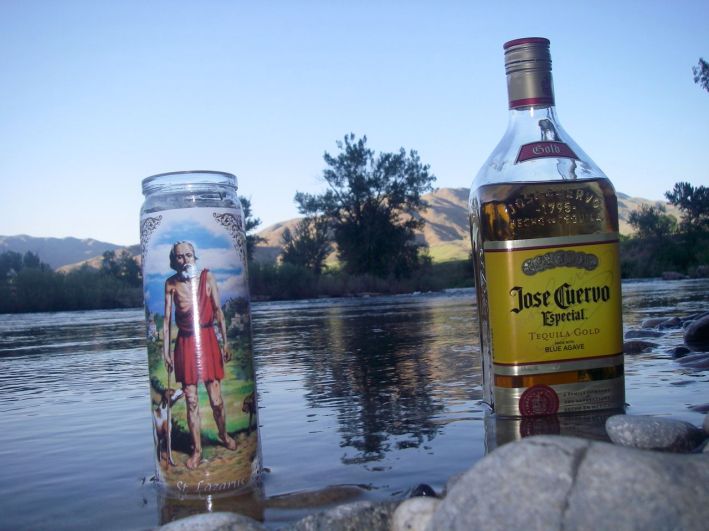
Always an enjoyable read—I like the part about Moby not doing camp grounds – Gary
Great blog. Go Janene!
Rick
Gutsy, determined and willing to take criticism, Larry lucked out. Janene you are the real thing. I hope I come out of teaching as healthy as you are, it is the miserable stretch of the teaching river, where the water is flat for a long way with no end in sight and the weather is unreliable and there are no camp spots available. Need an adventure for Spring Break.
Awesome adventure! Great job Janene! You rock! I like he picture of the Jose Cuervo…reminds me of one from KZ! Keep on rockin, Moby!
Janine – You go girl! So proud of you that you’ve shown girls can row boats too. And live to tell about it!
Smith River here we come! Although I have no rafting experience I have lots of canoeing experience. Your latest blog has me excited about hitting the water this spring and summer although I am still loving the alpine and Nordic skiing. Mark
Great blog Larry. My all time favorite was running the middle fork of the Owhyee and doing Widdow maker falls. A true class 5. Or maybe even a six but fueled with testosterone and some JC we all made it with helmets and wet suits and our gear shuttled around just in case. Very high water lets you do it, but the plunge as you go over really sucks the you know what out you! Keep on runnin them and go Janene.